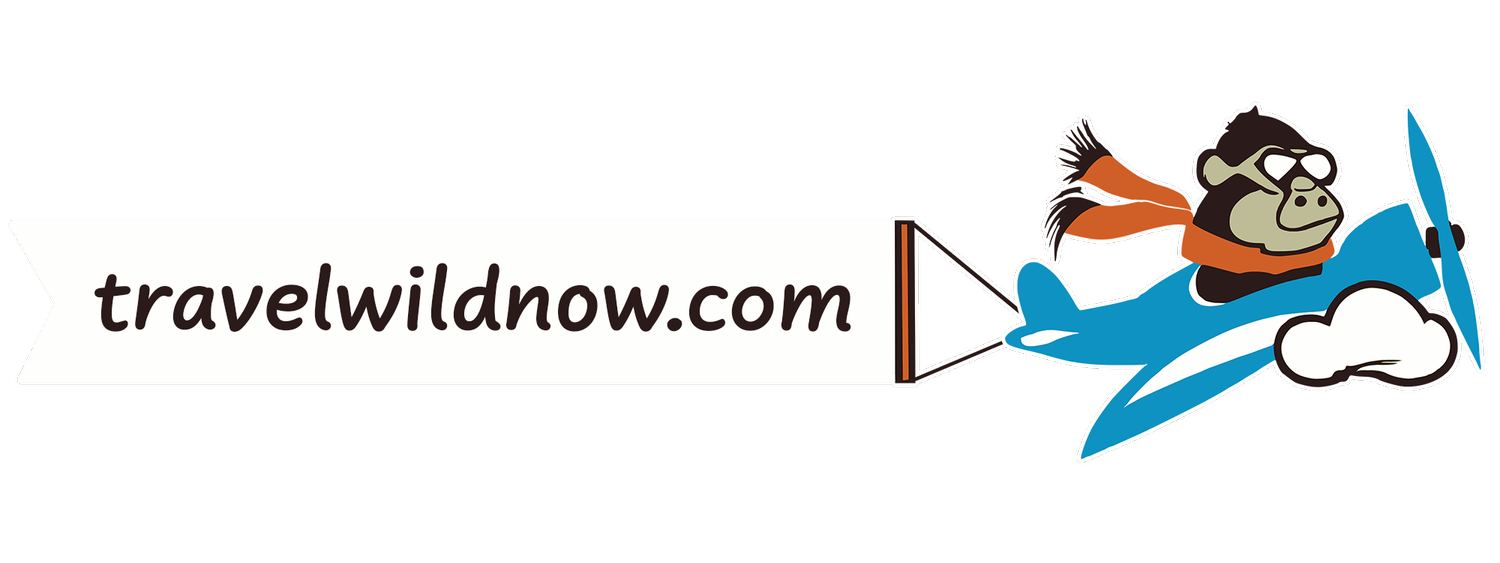NEW ZEALAND - The South Island 10, 13, or 16 days
This itinerary visits the adventure town of Queenstown, Fiordland National Park which includes Milford Sound and Doubtful Sound, the Southern Scenic Route, the Scottish heritage town of Dunedin and the Otago Peninsula, Mount Cook National Park, the resort town of Wanaka, Abel Tasman National Park and the wine growing region of Marlborough.
New Zealand's South Island is undoubtedly one of the world's most beautiful places. Spectacular glaciers, picturesque fjords, snow-capped Southern Alps, vast plains, rolling hillsides, subtropical forest, volcanic plateau and miles of coastline with gorgeous sandy beaches. Abel Tasman National Park is known for its trails and ocean kayaking, while Queenstown is famed for adventure sports like bungee jumping and skiing.
Before you go:
Travel Adaptor - Type I
Visa is required when visiting New Zealand - Apply online
Travel Guides: Lonely Planet’s New Zealand South Island and Fodor’s New Zealand.
Download the All-Trails app on your smartphone. Essential for any trek in New Zealand.
New Zealand has strict biosecurity guidelines. Remember to declare all food items. <video>
DAY 1
Arrive at Queenstown, NZ. <Learn more on international and domestic connections at AKL airport>
Queenstown is a epicenter of adventure.
It sits on the shores of Lake Wakatipu, set against the dramatic Southern Alps. <street map>
If time and weather permits, take the Skyline Gondola to Bob's Peak.
An awesome panoramic view of Queenstown, Lake Wakatipu and the Remarkable Mountains, especially at sunset.
Overnight: Queenstown (2 nights) <where to stay>
DAY 2
Visit the town of Glenorchy, a true outdoor paradise.
Glenorchy is a charming town featuring pristine lakes, red beech forests, open plains and towering peaks.
Photographers can capture beautiful views of the blue waters of Lake Wakatipu and the Remarkable mountain range. The drive from Queenstown to Glenorchy is one of the most scenic drives in New Zealand,
Kayaking, horseback riding and day walks are common activities in the Glenorchy mountain valley.
The region offers an amazing journey deep into rock pools, streams and dramatic chasms of Mt Aspiring National Park.
The lake fills a deep valley carved into the mountains by ancient glaciers. Each day the T.S.S. Earnslaw cruises the lake.
Situated a scenic 45-minute drive from Queenstown, Glenorchy is a lush green paradise.
Popular Glenorchy Day Walk:
Glenorchy Walkway-is a flat 1–2 hour loop track.
It’s a great family walk, with stunning views of the mountain range. There is a boardwalk which provides opportunity to view bird life.
Start/finish: signposted at the Glenorchy waterfront.
GPS Coordinate: 44°50'60.0"S 168°22'55.2"E
There are many other walks ranging from 30-minutes up to a full day on well-formed tracks suitable for people of all ages and fitness.
Read more about Glenorchy walking trails which includes a trail map.
Overnight: Queenstown
Distance: Queenstown ---> Glenorchy, each way 45 min.
Glenorchy, considered by many to be one of the most scenic regions in New Zealand.
DAY 3
Discover Queenstown - known as New Zealand's Adventure Capital.
The area attracts visitors who come for world-class skiing and snowboarding to unique thrills in the water, the air and on land.
Experience jetboating on the Shotover and Dart river. A thrilling ride not to be missed! <video>
Stop at Kawarau Bridge Bungy - site of the original (1988) bungy jump.
It’s fun even to watch the people leap!
Visit Chard Farm Vineyard - a excellent detour on the way to Te Anau.
* * * * * * * * * * * * * * * *
Continue to Te Anau later in the day.
Te Anau is the gateway to Fiordland National Park and Milford Sound.
The area is known for the glacier-carved fjords, endangered flightless takahē birds and abundant trout in Lake Te Anau.
Overnight: Te Anau, (3 nights)
Where to stay: book in ADVANCE during the high-demand summer months (especially from Christmas to early March).
Distance: Queenstown ---> Te Anau, 2 hrs.
Day 4
At sunrise begin your epic journey to Milford Sound (Fiordland Park).
Milford Sound is known for towering Mitre Peak, along with rain forests and waterfalls.
A cruise on Milford Sound is a MUST. Cruises depart early in the morning. Photo opportunities abundant.
<What you need to know about booking a cruise>
Bring a good raincoat. Be prepared for rain at any time of the year.
Afterward, we recommend the Key Summit hike, part of the famous Routeburn Track. Enjoy panoramic views over mountains and alpine lakes. It’s a 3-hr. roundtrip hike.
The hike begins at The Divide parking lot: <Learn more>
GPS coordinate: 44°49'30.1"S 168°07'06.7"E
Overnight: Te Anau
Distance: Te Anau ---> Milford Sound, 2 hrs.
DAY 5
Visit Doubtful Sound - the deepest of the fjords. Superb physical grandeur.
Doubtful Sound is only accessible by boat.
The all-day cruise (7 hrs.) crosses Lake Manapouri, followed by a bus trip over the epic Wilmot Pass through Fiordland’s rainforest & into the Sound.
Departs from the Manapouri Boat Launch.
Allow 25 minutes from Te Anau to the boat launch. <Parking Lot>
Doubtful Sound and the entire Fiordland Park receives a high amount of rainfall, ranging from a yearly average of 3,000–6,000 mm (120–240 in). The vegetation on the mountainous landscape surrounding the fjord is dense native rain forest.
Overnight: Te Anau
Distance:
Te Anau ---> Doubtful Sound boat launch parking lot. (Manapouri) 25 min.
DAY 6
At sunrise depart Te Anau toward the southern coast on the Southern Scenic Route.
The Southern Scenic Route is one of the best in New Zealand.
The drive consists of raw coastline, cliffs, pretty countryside and great photo stops.
Points of Interest: <map>
1. Slope Point -the weather is so fierce that the strong winds have left a patch of trees weirdly warped.
2. Curio Bay - Hector's dolphin and whales are occasionally observed offshore.
3. Nugget Point Lighthouse - a easy 20-minute RT walking path leading to a viewing platform.
Overnight: Dunedin (2 nights)
Alert: Today involves a full day of driving, a distance of ~ 500 km (292 mi.) 8 hours.
Distance:
Te Anau ---> Nugget Point, 6.5 hrs. / 375 km
Nugget Point ---> Dunedin, 1.5 hrs.
DAY 7
Discover Dunedin, known for its Scottish heritage, Victorian & Edwardian architecture.
It’s a historic city filled with contemporary bars, restaurants and boutiques.
Experience nature on the Otago Peninsula located on the south side Dunedin.
Visit the Royal Albatross Center. View the Albatross with a guided tour.
Penguin Place - learn about the Little Blue Penguins and Yellow-Eyed Penguins.
Overnight: Dunedin
Distance:
Dunedin ---> Otago Peninsula, 40 minutes.
DAY 8
Next stop is Mount Cook National Park <route>
En route stop at the Moeraki Rocks, a group of spherical boulders scattered along Koekohe Beach.
Continue to Mount Cook Park, arriving in the afternoon.
If time allows, explore the village area or take in the Tasman Glacier trek. It’s a short “Easy” one (1) hour hike to view the glacier.
Overnight: Mount Cook Village. (2 nights)
Distance:
Dunedin ---> Moeraki Rocks, 1.5 hrs.
Moeraki Rocks ---> Mount Cook Village, 3 hrs.
DAY 9
Explore Mount Cook National Park.
Enjoy the spectacular landscape consisting of glacier carved valleys, turquoise lakes and New Zealand's highest mountain range.
Recommended hikes:
Hooker Valley trek - stunning views over Mueller Lake.
Easy hike, Distance: 10 km. Duration: 3 hr. RT. <Trails details>
Tasman Glacier trek - icebergs can usually be seen floating in the lake in summer. Enjoyable short walk with a great view.
Easy hike, Distance: 3 km. Duration: 1 hr. RT. <Trails details>
Sealy Tarns trek (Mueller Hut route) - on a good weather day, this climb will reward you with spectacular views of the Hooker Valley and the peaks in the area, including Mount Cook on a clear day.
Moderate hike, good physical condition recommended. Distance: 11 km. Duration: 4 hr. RT. <Trails details>
Overnight: Mount Cook Park village. <Where to stay>
DAY 10
Departing Mount Cook Village, you’ll pass through Wanaka, NZ. and continue to Queenstown.
En-route, stop at the Wanaka Tree, the most photographed tree in New Zealand.
Nearby is the Cardrona Distillery. Stop and sample some excellent liquor.
Nestled in the Cardrona Valley near Wanaka, sample some Single Malt Vodka, whiskey and Orange Liquor.
<Directions> GPS coordinate: 44°51'54.1"S 169°01'07.8"E
Overnight: Queenstown
Distance:
Mt Cook Village: ---> Wanaka, 2.5 hrs.
Wanaka ---> Queenstown, 1 hr.
DAY 11
Queenstown ---> domestic flight ---> Nelson, NZ. (or depart from Queenstown for home)
Book all domestic flights with Air New Zealand.
Arrive in Nelson and transfer to your hotel.
Kaiteriteri - is a launching spot for your trip into the Abel Tasman National Park.
Abel Tasman National Park is a wilderness reserve. It’s known for the Abel Tasman Coast Track, a long trail winding over beaches and across ridges.
Overnight: Nelson region. We recommend accommodations near Kaiteriteri.
Distance: Nelson ---> Kaiteriteri, 1 hour
DAY 12
The most popular excursion is a scenic cruise up the coastline of Abel Tasman Nat. Park.
Cruises depart daily in the morning from the Kaiteriteri boat launch. <location>
Select the Cruise and Walk activity.
The boat will drop you off at the northern section of the park. The drop off spot is Awaroa Lodge. There you have lunch and begin the hike through lush forest and ocean scenery, ending at a specified beach where the boat will pick you up and return back to Kaiteriteri.
The coastal track is well marked & signposted. Great family fun! <track route>
Overnight: Nelson region.
Distance: Nelson -—> Kaiteriteri. 1 hour.
DAY 13.
Depart at Nelson airport to return home, unless you’re extending the journey to Marlborough Sound.
Overnight: Marlborough area if you’re extending your vacation.
Distance:
Nelson ---> Marlborough Sound area, 2 hrs.
DAYS 14-15
Two (2) great days along Marlborough Sound. A picturesque region of beaches, bays and small towns.
The iconic Queen Charlotte Track can be explored by foot, mountain bike or sea kayak. The 70 km track passes through stunning landscapes, with accommodation and restaurants along the way.
While the full multi-day hike is the best way to make the most out of the track, there are options to do sections as day hikes.
Check here the various walking trails ranging from 45 minutes to 4 hours.
Overnight: Marlborough Sound area.
Marlborough Sounds is home to a few resorts and lodges packed with activities.
Check out: Okiwa Bay Lodge, Punga Cove Resort and Lochmara Lodge.
Distance:
Picton or Onahau Bay <---> Nelson, 2 hrs. each way.
DAY 16.
Average cost:
(EXCLUDING AIRFARE)
$$$ USD for two (2) people
Budget: $4,900
Moderate: $5,900
Luxury: $7,000 +
Climate Guide:
Historical weather data-click here.
During the months of January, February and December you are most likely to experience good weather with pleasant average temperatures.
The warmest months are December through March.
The coolest months are July and August.
Rainfall is consistent for most months of the year.
February is the driest month.
sources: wikipedia.org, geographphx
No copyright infringement is intended on this website by travelwildnow.com














